Key Takeaways

- Market Research is Crucial: Analyze competitors, identify target customers, and understand industry trends to tailor your jewelry offerings effectively.
- Create a Comprehensive Business Plan: Outline your business goals, target market, pricing strategy, and financial projections to guide your new venture and attract investors.
- Niche Selection Matters: Choose a specific jewelry type (bracelets, necklaces, etc.) and establish a unique selling proposition to differentiate your brand in the competitive market.
- Focus on Quality Materials: Source high-quality metals and gemstones to ensure the durability and appeal of your jewelry pieces, fostering customer trust and satisfaction.
- Build an Online Presence: Develop a professional website and leverage social media platforms to showcase your designs, engage with customers, and increase brand visibility.
- Implementation of Strategic Marketing: Utilize targeted promotional tactics, such as influencer collaborations and social media ads, to attract customers and grow your permanent jewelry business.
Are you ready to turn your passion for jewelry into a thriving business? The permanent jewelry trend is taking the market by storm, offering customers a unique and stylish way to express themselves. With its growing popularity, now’s the perfect time to dive in and explore how you can establish your own permanent jewelry business.
How to Start a Permanent Jewelry Business
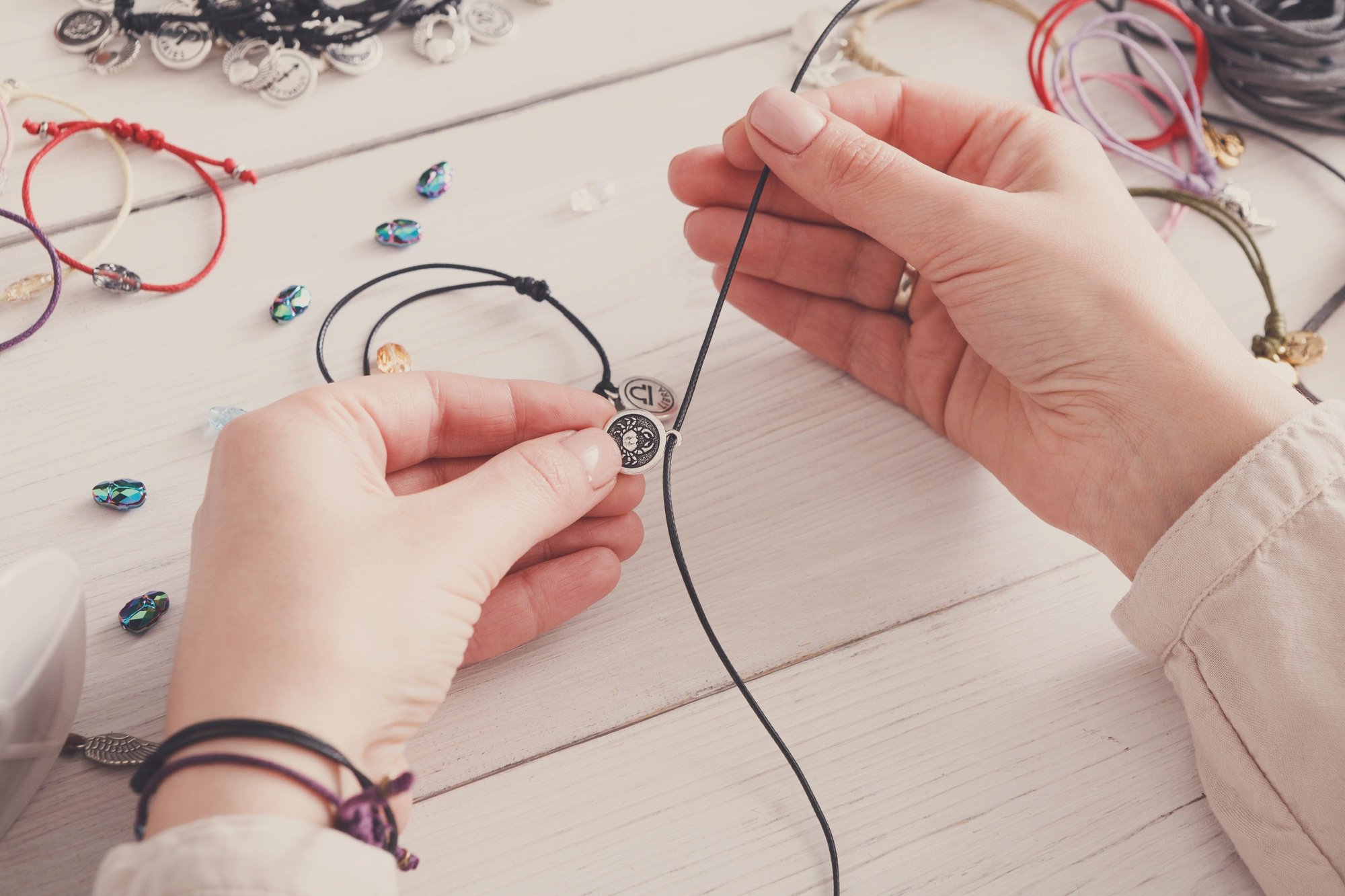
Starting a permanent jewelry business involves several critical steps.
- Research the Market: Analyze competitors and identify target customers. Determine price points and design preferences. Gather insights to inform your offerings.
- Develop a Business Plan: Create a comprehensive plan detailing your business goals, target market, marketing strategies, and financial projections. This plan guides your business decisions and attracts potential investors.
- Choose Your Niche: Select specific types of permanent jewelry to focus on, such as bracelets, necklaces, or anklets. Define your unique selling proposition to stand out in the market.
- Source Quality Materials: Identify suppliers who provide high-quality metals and gemstones. Building relationships with reliable sources ensures consistency and craftsmanship.
- Set Up Your Workspace: Design a functional and inspiring workspace for creating jewelry. Ensure your setup includes tools, safety equipment, and sufficient space for production.
- Create a Brand Identity: Develop a memorable brand name, logo, and cohesive aesthetic. Your brand identity should reflect the style and values of your permanent jewelry.
- Build an Online Presence: Create a professional website and establish social media accounts. Utilize platforms like Instagram and Pinterest to showcase your designs and engage with potential customers.
- Establish Sales Channels: Decide on sales platforms, including online stores, craft fairs, or local pop-up events. Diversifying sales channels maximizes your reach.
- Implement Marketing Strategies: Work on promotional tactics to attract customers. Collaborate with influencers or run targeted social media ads to increase visibility.
- Monitor Financials: Track expenses, sales, and profits regularly. Understanding your financial performance aids in making informed decisions about growth and investment.
Following these steps lays the foundation for successfully launching your permanent jewelry business, positioning you to capitalize on the growing demand in this niche market.
Understanding Permanent Jewelry
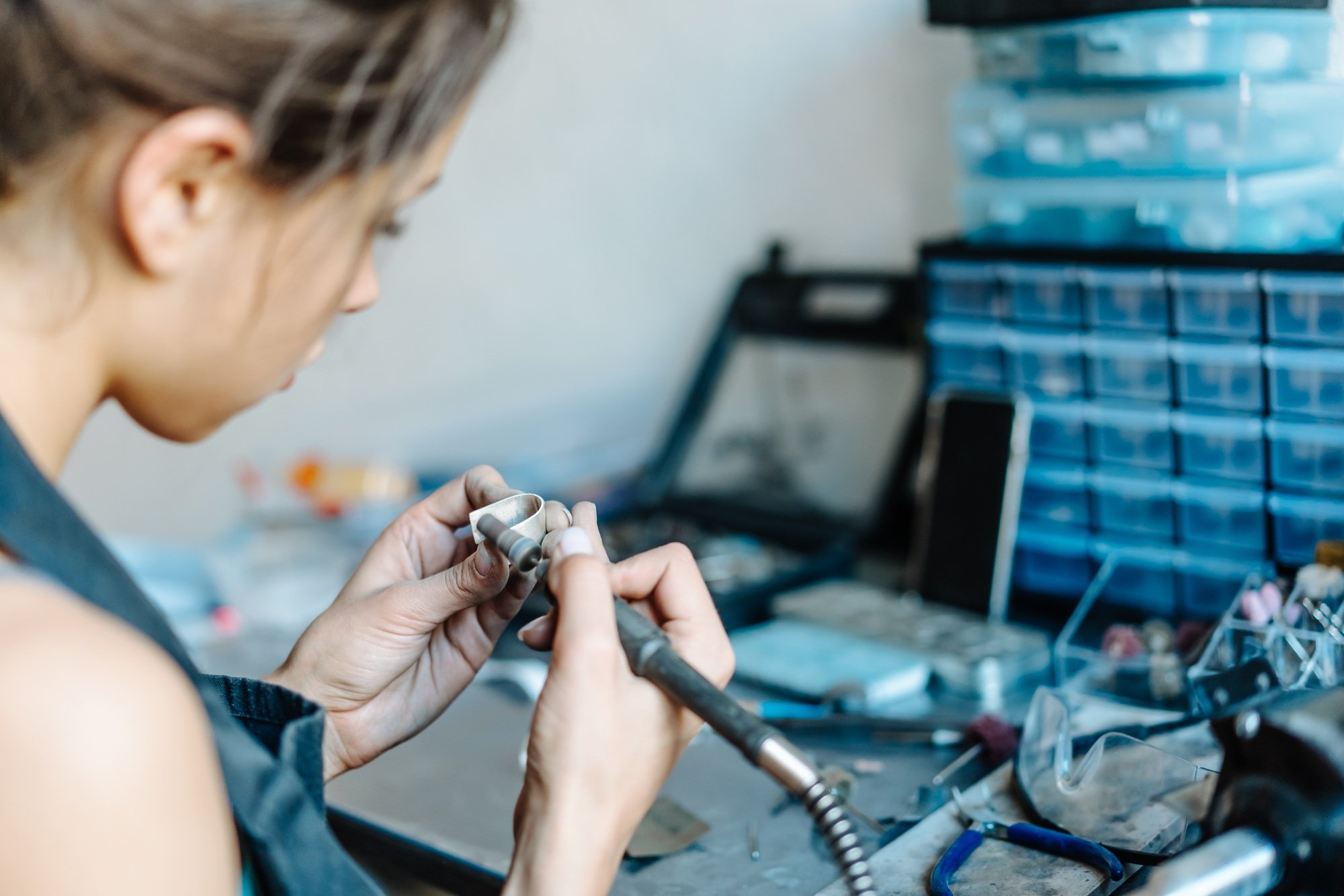
Permanent jewelry represents a growing trend in the jewelry market. This unique style offers a continuous loop that remains on the wearer’s body, appealing to those interested in symbolizing special relationships or personal expression.
What Is Permanent Jewelry?
Permanent jewelry is welded instead of clasped, creating a seamless piece that remains on your body. Commonly crafted as bracelets, this jewelry is soldered to the wrist, ensuring a secure fit without the risk of loss associated with traditional clasps. Crafting this type of jewelry requires specific techniques, tools, and knowledge about materials.
Benefits of Permanent Jewelry
- Convenience and Low Maintenance: Permanent jewelry eliminates the need to remove and replace the piece. This feature enhances your lifestyle by reducing the hassle of managing regular adjustments.
- Security: The welded design ensures that the jewelry remains intact and secure. You enjoy peace of mind knowing that the piece will not easily break or fall off.
- Symbolism and Self-Expression: Permanent jewelry serves as a meaningful way to represent connections with friends, family, or significant others. Each piece embodies a personal story or commitment, making it a great option for your small business’s offerings.
Researching the Market

Researching the market forms the foundation of building a successful permanent jewelry business. Understanding industry trends and identifying your target audience ensures targeted offerings and effective strategies.
Analyzing Industry Trends
Analyze current industry trends to capitalize on the growth of the permanent jewelry market. Significant growth has occurred, with a notable preference for durable and timeless jewelry pieces. Utilize online tools such as Google Trends to track rising designs, styles, and materials. Stay updated on seasonal trends and shifts in consumer preferences to maintain a competitive edge. Observe trending styles like minimalist, bohemian, and classic to align your product line with market demands.
Identifying Your Target Audience
Identify your target audience for effective marketing strategies and product development. Focus on demographic factors, including age, gender, and lifestyle choices. Gather insights from social media analytics to understand preferences and interests. Conduct surveys or interviews to collect feedback directly from potential customers. Tailor your offerings based on the specific needs and styles favored by your audience. Engaging with your audience fosters loyalty and builds relationships that support your small business ambitions.
Creating a Business Plan

Building a business plan lays the groundwork for your permanent jewelry business. This document defines your strategy and outlines your goals.
Key Elements of a Business Plan
Incorporate the following components into your business plan:
- Executive Summary: Provide a concise overview of your business. Include your mission statement, target market, and key objectives.
- Company Description: Present your business history. Highlight your experience and the inspiration for starting your venture.
- Market Analysis: Conduct thorough research. Analyze your target audience, evaluate competitors, and spot trends. Utilize tools like Google Trends and social media analytics to understand consumer preferences.
- Business Model: Establish your operational strategy. Decide whether you will run an e-commerce site, a physical location, or a combination. Additionally, define your pricing strategy and marketing plan.
Setting Financial Goals
Set specific financial objectives for your business. Identify target revenue figures for the first year and subsequent years. Consider costs such as materials, labor, and overhead. Develop a realistic budget and establish profit margins. Tracking financial progress helps assess overall business health.
Defining Your Unique Selling Proposition (USP)
Clearly articulate what differentiates your permanent jewelry from competitors. Unique design features, exceptional craftsmanship, or personalized customer services can serve as potential selling points. Your USP helps capture interest and convert shoppers into loyal customers. Identifying your USP solidifies your position in the business landscape.
Legal Requirements and Registration
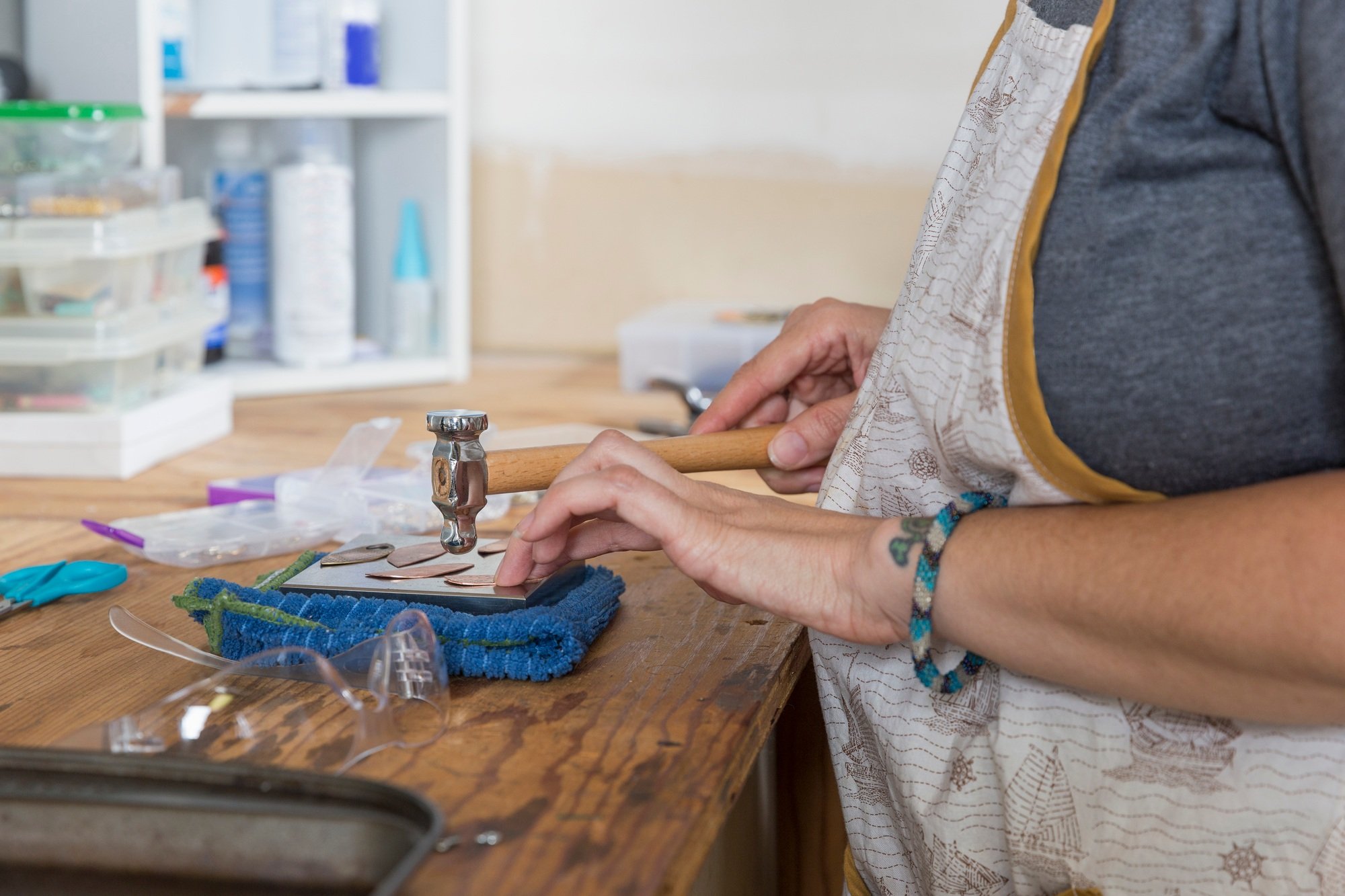
Starting a permanent jewelry business involves navigating various legal requirements and registration processes. Following these steps ensures compliance and sets a solid foundation for your small business.
Choosing a Business Structure
Select the appropriate business structure for your permanent jewelry business. LLC (Limited Liability Company) offers protection from personal liability for corporate debts and obligations. This structure is favored in the U.S. due to its flexibility and tax advantages. Corporations can also serve as a business structure but are generally more complex and less common for small businesses. Sole Proprietorships are simpler but lack the liability protection an LLC provides. Weigh the advantages and disadvantages of each structure to determine which best suits your business model.
Registering Your Business
Complete the registration process to make your permanent jewelry business official. Start by choosing a unique name that reflects your brand. Research state and local requirements to file for your business structure, typically through the Secretary of State’s office in your area. Register for an Employer Identification Number (EIN) with the IRS for tax purposes. In certain cases, registering a fictitious business name (DBA) may also be necessary if operating under a different name.
Obtaining Necessary Permits and Licenses
Acquire the necessary permits and licenses to operate legally. Depending on your location, specific permits may include a business license, sales tax permit, or zoning permit. Check with local government offices or small business administrations for precise requirements. Engaging in compliance with regulations zoning local ordinance requirements prevents future legal complications and fosters business trust.
Sourcing Materials and Tools
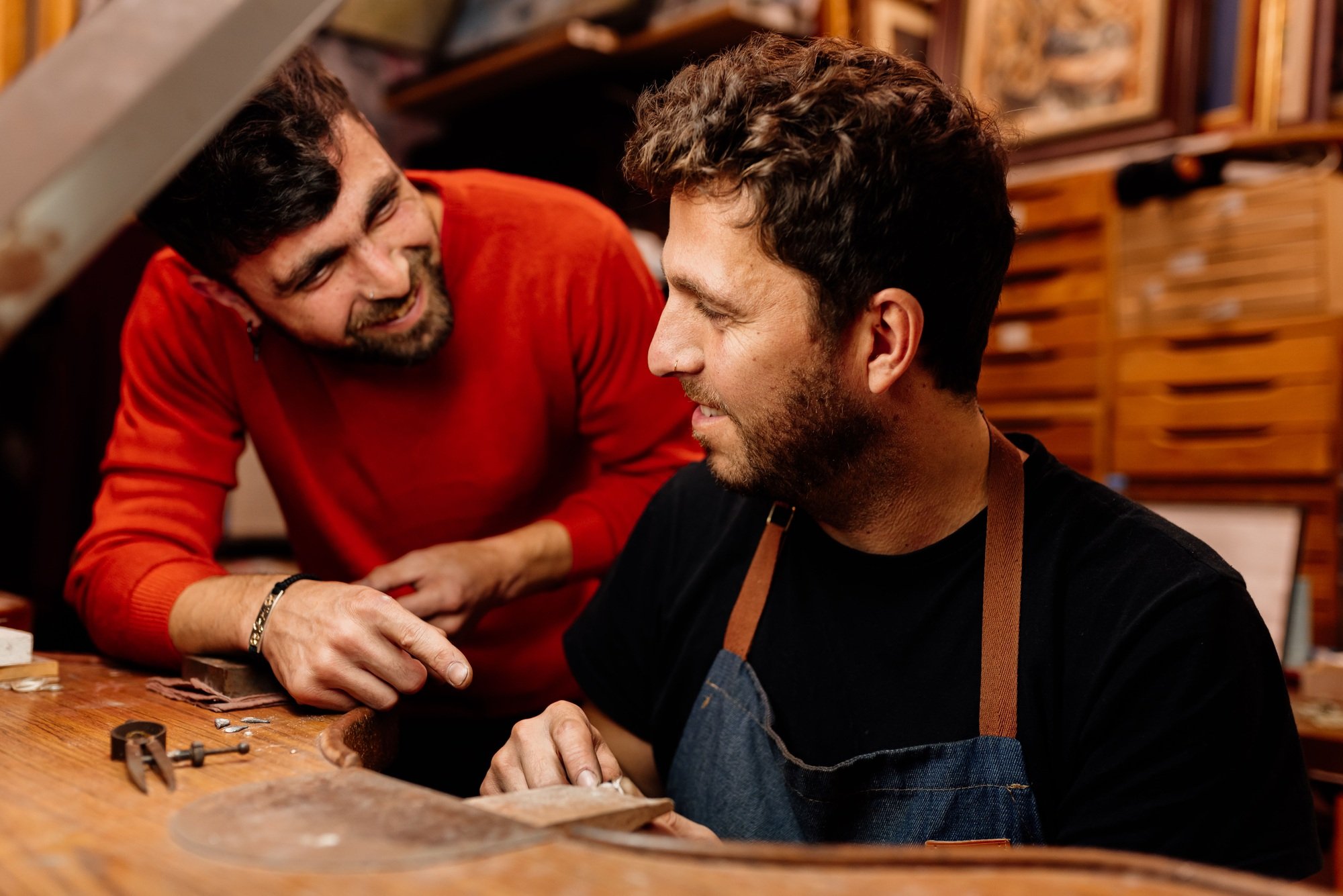
Sourcing high-quality materials and tools forms the backbone of your permanent jewelry business. Focus on the essentials to ensure durability and appeal.
Essential Materials for Permanent Jewelry
- Chains and Metals: Invest in durable materials such as 14K gold-filled chains, sterling silver, and stainless steel. These materials resist tarnishing and withstand various conditions, including showering or swimming.
- Jump Rings: Acquire a substantial supply of jump rings that match your chosen chains. These small components connect the ends of the chain, essential for completing your pieces.
- Charms and Connectors: Offer a variety of charms and connectors to enhance customization. This selection meets diverse customer preferences and enhances the creative aspect of your jewelry.
Recommended Tools for Jewelry Making
- Jewelry Pliers: Utilize round-nose pliers for looping wire and flat-nose pliers for bending and holding. These tools assist in crafting clean, professional designs.
- Wire Cutters: Employ wire cutters for precise trimming of chains and wires, ensuring clean cuts for a polished finish.
- Soldering Equipment: Invest in a quality soldering kit to create permanent, seamless connections. This equipment is vital for the unique welding technique specific to permanent jewelry.
- Measuring Tools: Use calipers and rulers for accurate measurements. Precision helps maintain consistency across multiple pieces.
Sourcing the right materials and tools simplifies the process of establishing your small business in the permanent jewelry niche, ensuring quality and customer satisfaction.
Designing Your Jewelry Collection
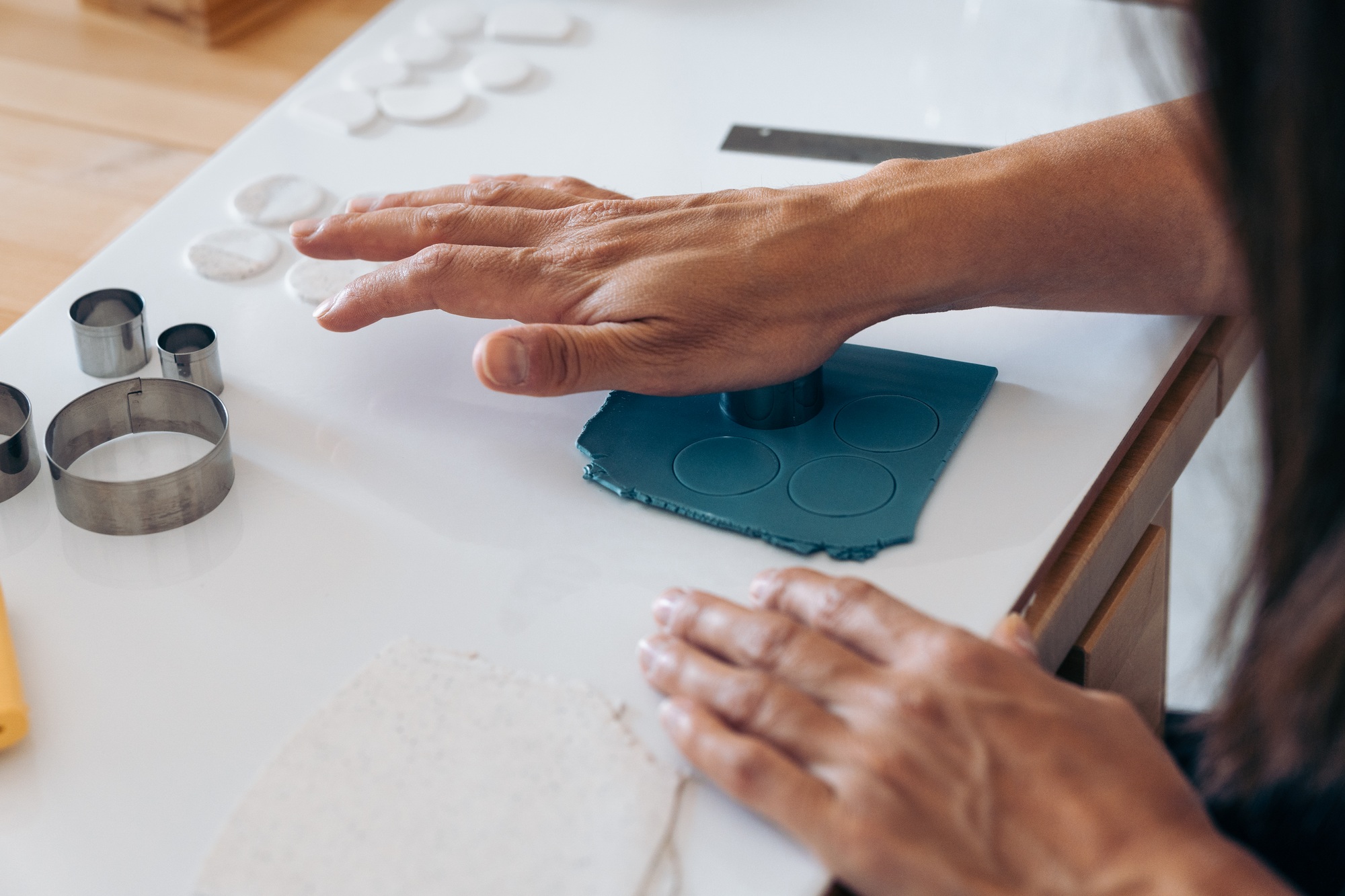
Designing a jewelry collection involves distinct steps that enhance your brand identity in the small business sector.
Creating a Signature Style
Establish a signature style that reflects your vision and resonates with your target audience. Focus on specific design elements such as minimalist aesthetics, bold statements, or intricate details. Ensure that each piece exhibits unique characteristics that make it instantly recognizable. Incorporate consistent color schemes or metal finishes to strengthen your brand identity. For instance, if you emphasize eco-friendly materials, highlight that commitment across your collection.
Developing a Collection Theme
Develop a clear collection theme to guide your design process and strengthen your marketing efforts. Choose a theme based on concepts like personal connections, nature, or customization, effectively attracting customers. Organize your pieces into distinct categories – such as seasonal collections or special occasions, showcasing versatility and relevance. For example, a collection themed around anniversaries can include elegant bracelets or charms designed specifically to celebrate those milestones.
Setting Up Your Workspace

Creating an effective workspace plays a significant role in launching your permanent jewelry business. Focus on two primary aspects for optimal efficiency: studio design and material organization.
Designing an Efficient Jewelry Studio
Arrange your studio layout to enhance workflow. Allocate specific areas for different tasks such as design, assembly, and finishing. Position tools and materials strategically to minimize movement between workstations. Ensure plenty of natural light and adequate artificial lighting to illuminate detailed tasks. Consider including ergonomic furniture to maximize comfort during long periods of crafting. Prioritize safety by providing ample space around equipment and ensuring easy access to exits.
Organizing Your Materials and Tools
Implement an organized system for your tools and materials. Use labeled storage bins or drawers for easy access to different types of jewelry supplies. Categorize materials such as chains, charms, and soldering tools to expedite the creation process. Maintain a checklist to track inventory and reorder materials when needed. Incorporate a designated area for new arrivals to prevent clutter and confusion. Regularly evaluate your storage system for efficiency, adjusting as necessary to meet the demands of your small business.
Pricing Your Jewelry

Pricing your jewelry correctly impacts your small business’s profitability and market positioning. Pay close attention to the following factors and strategies to set effective prices.
Factors to Consider When Pricing
- Cost of Production: Calculate your total production costs, which include materials, labor, packaging, and overhead. Factor in specialized equipment costs like laser welders for permanent jewelry.
- Target Market: Identify your target audience’s preferences regarding price sensitivity and perceived value. Understand what your ideal customers consider a reasonable price for permanent jewelry.
- Competitor Pricing: Analyze similar offerings from competitors in the market. Consider their price points and what differentiates your jewelry to establish a value proposition.
- Profit Margin: Determine the profit margin you want to achieve. Aim for a margin that allows your business to grow while staying competitive.
Strategies for Competitive Pricing
- Tiered Pricing: Offer different pricing levels based on design complexity or material quality. This approach caters to various customer budgets and maximizes sales opportunities.
- Promotional Pricing: Implement limited-time offers or discounts to entice new customers. Seasonal sales can boost visibility and attract sales during specific periods.
- Psychological Pricing: Set prices just below whole numbers (e.g., $99.99 rather than $100) to create a perception of better value, influencing purchasing decisions positively.
- Bundling Products: Combine pieces or offer package deals. This strategy encourages customers to explore more of your collection and increases overall sales volume.
- Regular Reevaluation: Regularly assess your pricing strategy in response to market changes, customer feedback, and cost fluctuations. This ensures your prices remain competitive and profitable.
By integrating these factors and strategies, you create a comprehensive pricing strategy that supports your small business’s growth and success in the permanent jewelry market.
Marketing Your Permanent Jewelry Business

Effective marketing strategies enhance visibility and attract customers to your permanent jewelry business. Here are essential approaches for marketing.
Building an Online Presence
Establish an online presence that showcases your permanent jewelry collection. Create a user-friendly website optimized for local searches by incorporating location-based keywords. Include details about your products, pricing, and an online booking system for consultations. Ensure your website reflects your brand identity through visuals and messaging.
Utilizing Social Media Platforms
Leverage social media platforms to reach potential customers and engage with your audience. Use platforms like Instagram and Pinterest to share high-quality images of your jewelry, customer testimonials, and behind-the-scenes content. Post regularly to maintain interest and employ interactive features such as polls and stories for greater engagement. Paid advertising on these platforms can target specific demographics, increasing brand exposure significantly.
Networking and Collaborations
Participate in networking events and collaborate with other small businesses to expand your reach. Attend local craft shows or artisan markets to showcase your jewelry directly to customers. Partner with complementary businesses for co-hosted events or promotions that leverage each other’s customer bases. Building relationships within your community fosters goodwill and opens avenues for referrals.
Launching Your Business
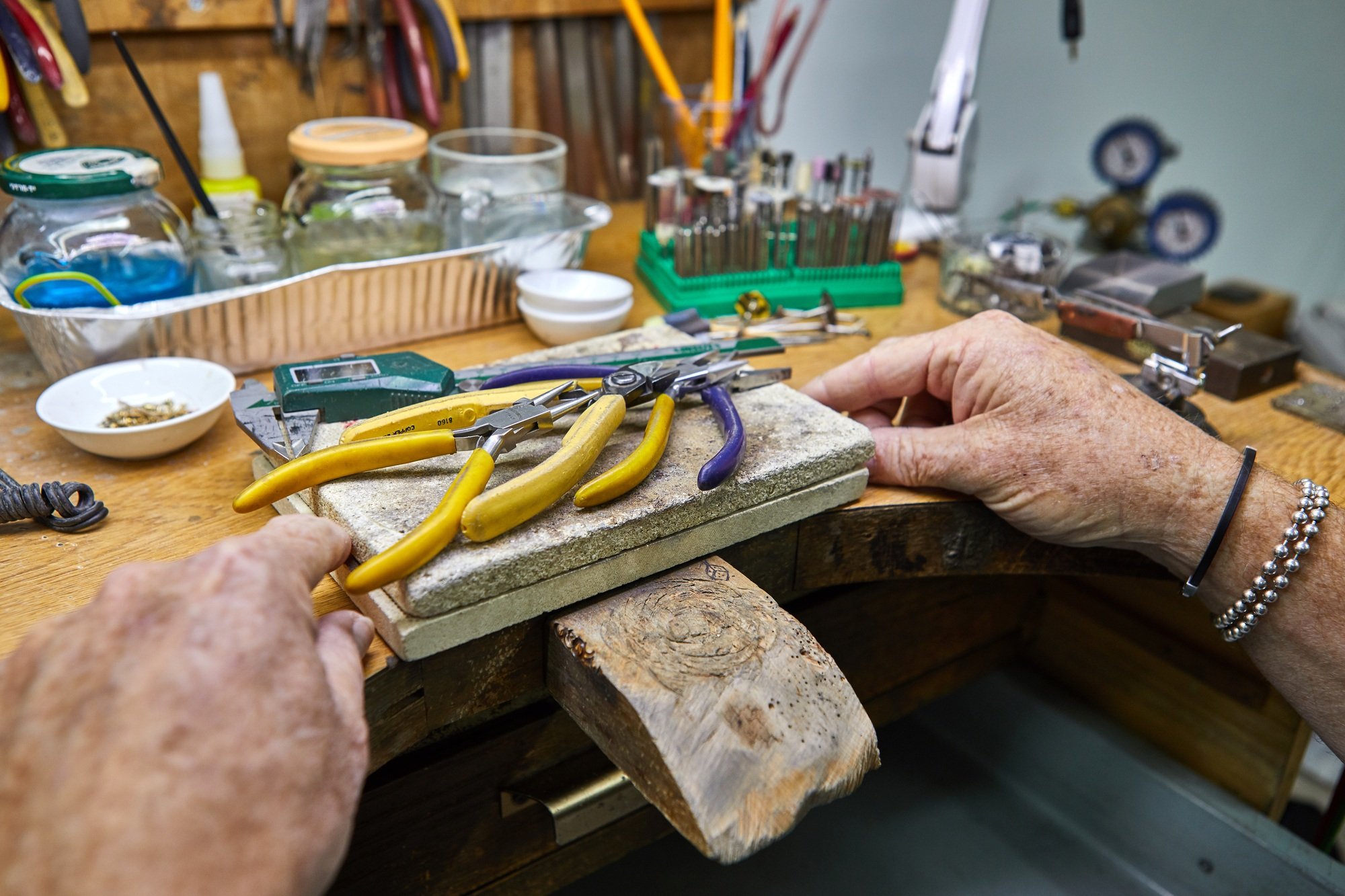
Launching your permanent jewelry business requires strategic planning and effective engagement with potential customers.
Planning Your Launch Event
Plan a launch event that showcases your permanent jewelry collection. Consider hosting an in-person event or a virtual online reveal. Secure a location that reflects your brand’s style and attracts your target audience. Utilize invitations and social media to spread the word about your event. Offer exclusive promotions or giveaways during the launch to create excitement. Incorporate activities that encourage interaction with your jewelry, such as customization stations or demonstrations of your design process.
Engaging with Your First Customers
Engage with your first customers through personalized outreach. Use social media platforms like Instagram and Facebook to connect with potential buyers. Offer special promotions to early customers to incentivize purchases. Collect feedback from these initial interactions to refine your products and services. Implement loyalty rewards to encourage repeat purchases and build long-term relationships. Create engaging content that highlights customer stories and showcases how your permanent jewelry enhances their lifestyle.
Troubleshooting Common Issues

Address common issues within a permanent jewelry business through effective strategies. Successful management of customer relationships and production timelines enhances overall performance.
Handling Customer Complaints
Handle customer complaints by addressing concerns promptly and effectively. Acknowledge the issue directly and express understanding toward the customer’s feelings. Offer solutions that align with company policies. For example, provide a refund or replacement if the product malfunctions. Maintain open communication throughout the resolution process to strengthen customer trust.
Managing Production Delays
Manage production delays by implementing proactive measures. Develop a timeline for production stages, setting realistic deadlines for each phase. Incorporate buffer times for unexpected challenges. Communicate transparently with customers about potential delays, offering updates when necessary. Utilize reliable suppliers to avoid material shortages and ensure consistent production flow. By adopting these practices, you can minimize disruptions and maintain customer satisfaction in your small business.
Continual Growth and Improvement

Continual growth and improvement drive the success of a permanent jewelry business. Focus on integrating customer insights and adapting to market trends.
Seeking Customer Feedback
Seek customer feedback consistently to understand preferences and enhance offerings. Implement surveys and encourage reviews after purchases. Use direct feedback for real-time improvements and product variations. Engage customers through social media platforms, encouraging them to share experiences and suggestions. Prioritize addressing concerns promptly, which fosters loyalty and reinforces trust. Utilize feedback to refine designs and tailor marketing efforts, ensuring alignment with target audience expectations.
Exploring New Trends and Techniques
Explore new trends and techniques in the jewelry market to maintain relevance. Analyze current design trends through platforms like Pinterest and Instagram. Attend trade shows to discover innovative materials and methods. Experiment with different styles and finishes to expand your collection. Adopt sustainable practices by sourcing ethically while attracting eco-conscious consumers. Embrace technology by incorporating online workshops or tutorials that showcase different jewelry techniques. Adapt to customer feedback regarding trends for continuous innovation and growth in your small business.
Conclusion

Starting a permanent jewelry business offers an exciting opportunity to tap into a growing market. By following the steps outlined in this article you can build a strong foundation that supports your creative vision and business goals.
Remember to stay engaged with your audience and adapt to their preferences. Continuous improvement and innovation are key to standing out in this competitive landscape.
Embrace the journey ahead and watch your passion for jewelry transform into a successful venture. Your unique designs and dedication can make a lasting impact in the world of permanent jewelry.
Frequently Asked Questions
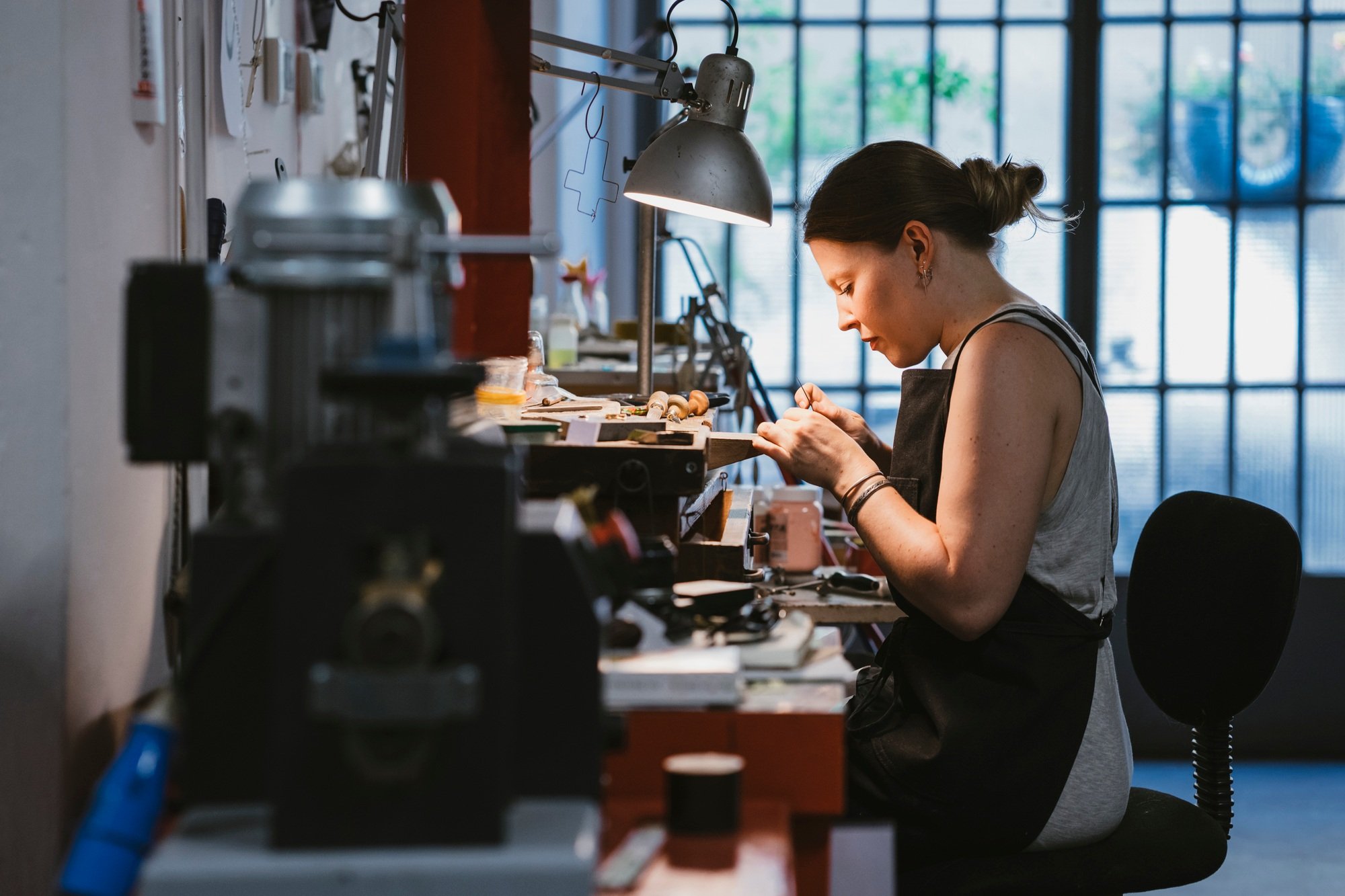
What is permanent jewelry?
Permanent jewelry refers to seamless pieces specially designed to be welded onto the wearer, often as bracelets. Instead of clasps, this method provides added convenience and security, making it a stylish and low-maintenance option for personal expression.
Why is permanent jewelry trending?
The growing trend of permanent jewelry is driven by its unique appeal and durability. Many consumers are drawn to the idea of a piece that symbolizes personal connections and the desire for timeless, low-maintenance fashion, making it a popular choice in the jewelry market.
How can I start a permanent jewelry business?
To start a permanent jewelry business, research industry trends, develop a comprehensive business plan, identify your target audience, and source quality materials. Establish a workspace, create a brand identity, and build an online presence to successfully launch your venture.
What materials are best for permanent jewelry?
High-quality materials like 14K gold-filled chains, sterling silver, and stainless steel are ideal for permanent jewelry. These options ensure durability and customer satisfaction, providing a solid foundation for your jewelry creations.
What factors should I consider when pricing my jewelry?
When pricing your jewelry, consider production costs, your target market, competitor prices, and desired profit margins. Regularly reassess your pricing strategies to adapt to market changes and ensure competitiveness.
How can I effectively market my permanent jewelry business?
To effectively market your business, build an optimized online presence with a user-friendly website and leverage social media platforms like Instagram and Pinterest. Engage in local networking, collaborate with other businesses, and participate in community events to enhance visibility.
What is the importance of customer feedback for my business?
Customer feedback is crucial for understanding preferences and improving offerings. Continuously engaging with your audience through surveys and social media helps foster loyalty and trust, ensuring your business adapts to evolving market demands.
How do I handle common issues in my jewelry business?
To manage issues such as customer complaints or production delays, maintain clear communication with customers, acknowledge their concerns promptly, and set realistic timelines. Offering solutions that align with company policies can enhance customer satisfaction.
What steps should I take for a successful launch event?
For a successful launch event, plan an engaging in-person or virtual showcase, utilize social media for promotion, and consider offering exclusive promotions. Personalize outreach to early customers and gather feedback to build relationships and loyalty.
How can I ensure continual growth for my permanent jewelry business?
To ensure growth, actively seek customer feedback, engage with your audience, and stay updated on trends. Attend trade shows, analyze design trends, and consider sustainable practices to attract eco-conscious consumers, allowing your business to innovate continuously.
Image Via Envato



